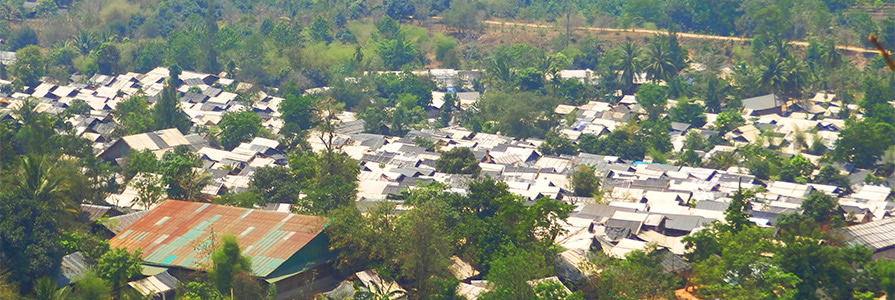
Tham Hin
Location
Suan Phung District, Ratchaburi Province
Distance from Border
10 km in a straight line
Distance from Kanchanaburi
90 km / approx. 2 hours driving time
Distance from Sangklaburi
295 km / approx. 4½ hours driving time
Distance from Bangkok
170 km / approx. 3 hours driving time
Accessibility
Car: All-year-round access (incl. 13 km of unpaved road)
Phone: No mobile phone coverage
Camp Geography
Area 40 rai (6 ha)
Introduction and History

Tham Hin camp was established in May 1997 following offensives by the Burma/Myanmar Military in the Tenasserim/Tanintharyi Region which caused extensive displacement of civilians.
Initially refugees stayed in three rudimentary sites at the edges of Ratchaburi and Kanchanaburi provinces in Thailand, until these were consolidated into Tham Hin camp.
Tham Hin is built on a very limited amount of space and is one of the most ‘closed’ camps on the border. While it is the closest to the Thai capital Bangkok, it receives fewer visitors than many other camps.
The camp is off the mains electricity grid, but the camp office and health and education centres have access to power from electric generators. Some households also have access to these to recharge vehicle batteries to power residential lighting.
Conditions at Tham Hin are severely cramped. As homes are placed very close together, thatch roofing is considered a fire hazard and plastic sheeting must be used instead.
The camp operates due to the efforts of a great number of residents and leaders such as bamboo plantation pioneer Koh Hey, warehouse worker Kho Pha Cho and community elder authority board member Tee Ya Bu.


